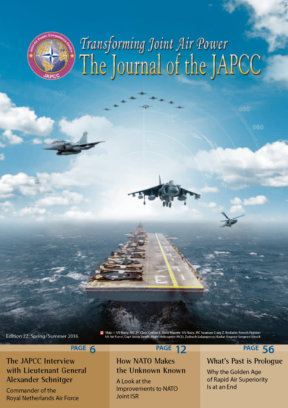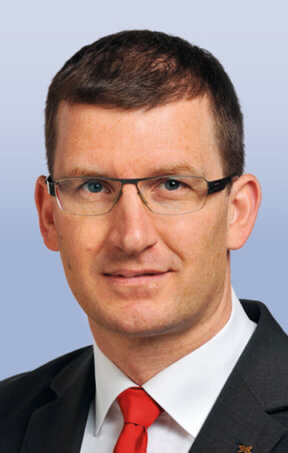Introduction
Critical infrastructures are organizations and institutions whose failure or impairment would cause sustained shortage of supplies, significant disruption of public security, or other dramatic consequences for the state or community they support.1 A similar definition is given by the US Department of Homeland Security: ‘Critical infrastructures are systems and assets, whether physical or virtual, so vital to the United States that the incapacity or destruction of such systems and assets would have a debilitating impact on security, national economic security, national public health or safety, or any combination of those matters.’2
Following the classification in the German National Strategy for Critical Infrastructure protection (CIP)3, critical infrastructures can be divided by their technical, structural, and functional characteristics into essential technical basic infrastructures or essential social and economic service infrastructures. The technical basic infrastructures include power supply, information and communication technologies of transport, traffic as well as drinking water supply and sewage disposal. Health systems, food chains, emergency and rescue services, civil protection, government infrastructure (including the legislative, executive, and judicial branches), financial services and media all belong to the socio-economic service infrastructure. Space is not explicitly listed, although the basic technical infrastructure as well as the essential socio-economic service infrastructures depend on space or at least are irreversibly linked to space capabilities.4 This is true for the military as well. Almost all of today’s military operations rely on capabilities enabled by space-based systems. Consequently, space assets have become a critical infrastructure not only for the civilian sector but also for the military world, as demonstrated by the numbers depicted in Figure 1.
Military Dependency on the Critical Infrastructure Space
Space systems remain an integral part of national security. The importance of space capabilities rose during the cold war, when the United States and the Soviet Union strove to observe the other’s strategic weapon arsenal.6 From today’s point of view, this helped provide a stable nuclear deterrence strategy. Space-based surveillance and reconnaissance systems have developed further since the cold war and provide crucial information for today’s military operations. The resolution of optical and radar systems has greatly improved over recent decades. Command and Control (C2) of operational military forces by land, sea, and air would be inconceivable without military communication satellites. The dual-use nature of military satellites has driven reliance by the civil sector. Global Positioning System (GPS) satellites, which were originally designed to enhance military navigational and targeting requirements, have driven multibillion dollar civil industries. In addition, weather satellites, which were originally launched by the military, have been nearly replaced by the civilian sector.
A science adviser to US President Ronald Reagan stated in 1987 that ‘even in a very limited war, we would have an absolutely critical dependence on space today’.7 This prediction was clearly confirmed in more recent US and Alliance operations such as in the Persian Gulf region, Afghanistan, and Libya, where the military uses of space greatly enhanced the Alliance’s effectiveness. Space systems provided support for navigation, weather, missile defence, communications, reconnaissance and surveillance, as well as target acquisition. As we face increasing global responsibilities with smaller forces, our ability to accomplish military missions will depend even more on such force-enhancing support from space.8 The dependency of NATO Forces on space systems reveals a major vulnerability due to a variety of threats.
Threats to the Critical Infrastructure Space
Understanding and defining existing and future threats that can damage or even destroy critical space infrastructure is a requirement for the development of needed and appropriate means of protection. The ground segments of space assets (control centres, ground stations, and space launch facilities) are mainly vulnerable to security risks such as cyber and physical attacks, whereas safety is the major concern with regard to the technical operation of launcher systems. Both require respective defensive measures or safeguards that are not further addressed in this article. The further focus will be threats towards on-orbit space systems.
On orbit space systems are exposed to a number of highly probable risks, which, according to a study of the German Aerospace Center (DLR),9 could be classified as:
- Intentional threats. Risks related to possibilities of an attack include disruption (‘jamming’), manipulation (‘hacking’), corruption (‘spoofing’) or destruction of satellites by anti-satellite weapons. The use of microwave and radio frequency weapons as well as ‘killer satellites’ are assigned to the same category.
- Natural threats. These include risks arising from the space environment itself, for example collision with a solid object with cosmic origin (meteor), high-energy particle radiation, magnetic storms (solar storms), or strong temperature fluctuations.
- Artificial threats. Threats posed by space debris include decommissioned satellites, rocket stages and their parts, or other artificial space objects. Additionally, design or development errors are allocated to the category of artificial threats.
In particular, the continuing growth of space debris poses an increasing threat to operational satellites. Today, the total amount of debris exceeds 200 million objects with diameters above 1 mm, accounting for a total mass of 6,500 tons. Of that, 77 per cent is concentrated in low Earth orbit (LEO), with higher concentration at 900 and 1,400 km. Studies show that the amount of debris in LEO is growing exponentially despite future debris release mitigation measures being considered. In the short and medium-terms, collisions will likely become a much larger contributor to debris generation in LEO, which may cause an exponential growth of further catastrophic collisions. Since even small objects can cause a total loss of the space system, space debris is already a major threat to satellite systems (Figure 2). With an estimated growth rate of about 5 per cent per year, the collision probability increases steadily.
Protection Measures Against Space Debris
An intact space infrastructure depends on technologies still in need of investigation and development. One of the main tasks of German Aerospace Center defence research is to provide an independent analysis and evaluation capability for the Federal Ministry of Defence (MoD). In that capacity, the DLR has conducted a comprehensive evaluation comparing the probability and impact of threats against potential space asset protection measures that could be realized with reasonable cost and effort.10 The results showed very low efficiency in shielding assets from the exponentially increasing space debris population, because measures could only be realized in the long-term and with high monetary investments in research and development programs. However, promising concepts for space debris removal are currently being investigated by the DLR in order face the further evolving challenge.
Thus far, several protection measures and collision risk mitigation concepts have been proposed, though the technology might not yet be completely available. The different approaches depend strongly on the size and the dynamic regime of the debris.
- Small size debris (less than 1 cm). Robust satellite architectures or armor are recommended in order to shield against debris impacts. These protection measures have to be incorporated before launch and are the cheapest by comparison with others.
- Large size debris (size more than 10 cm in size). Since this debris is usually tracked by ground stations and listed in orbital data catalogues, collision avoidance maneuvers are state of the art. More innovative is the idea of in-orbit protection vehicles to de-orbit debris surrounding space assets.
- Medium size debris (between 1 cm and 10 cm). This class of debris presents the greatest threat to operational satellites. It is too big to be countered by shielding technologies and still too small to be monitored and catalogued for collision avoidance with currently available technologies.
Laser-Based Debris Removal
A promising approach based on optical methods and laser technology will tackle this challenge. Optical tracking of space debris has already been demonstrated with unprecedented accuracy.11 In a further development, Laser Debris Removal (LDR) by ground-based lasers is intended to clean the Low Earth Orbits (LEO) from hazardous small and medium size debris.
The LDR concept uses a beam of closely directed laser energy projected from the ground to modify the trajectory of debris objects in low earth orbits (Figure 3). When the pulsed laser beam hits the object, it ablates and vaporizes a thin layer of material, and then it creates plasma and an exhaust plume, which leaves the debris surface at such high velocities it generates enough force to push the object into a new orbit or to cause debris to re-enter the atmosphere (Figure 4).
The overall requirements for a future LDR system have been investigated by a European consortium within the CLEANSPACE project funded by the European Commission.12 The study comprises the concept of an innovative, ground-based laser station network, which allows for the protection of space assets from orbit collisions with medium-size debris. Research and technology developments in lasers, system dimensioning, trajectory simulation, and ‘policy, ethical, and societal’ implication activities have been taken into account, as well as state of the art situational awareness and space debris population surveillance. Within the framework of the CLEANSPACE project, the concept of a ground-based laser system has been validated and a preliminary architecture has been proposed, including crucial points like laser safety and the necessity to have international authority to ensure safe operations. One can envision the realization such an innovative ground-based laser station to deal with medium size debris within the next decade.
Of great importance for the detailed layout of a LDR concept is the efficiency of the laser-matter-interaction process, since it has a direct impact on the required laser power and hence the overall system specifications. The ratio of the thrust exerted to the debris object to the average laser power, which is commonly known as the impulse coupling coefficient cm, is a material-specific figure of merit. However, in general, the laser-induced thrust is not proportional to the average laser power in a simple way. In fact, cm depends mainly on the laser pulse fluence ⌽ at the debris target exhibiting a threshold fluence ⌽th for the onset of ablation and an optimum fluence ⌽opt where cm shows a maximum.
The Institute of Technical Physics of the German Aerospace Center has been dealing with the characteristics and prospects of laser ablation propulsion for many years. The special challenges concerning laser-matter interaction with respect to a LDR concept have been addressed by experimental as well a modelling and simulation activities.
At first, the work concentrated on the dependency of the impulse coupling on the laser fluence for space-debris relevant materials. Aluminium, polyimide (both as a bulk material and a thin film material on an aluminium substrate), solar cell material and gold have been analysed by means of experiments with a torsional thrust balance and hydrodynamic simulations based on a two-temperature-model. Depending on the irradiated material, the experiments found the threshold fluence spans a range from 2 J / cm² to 8 J / cm² whereas optimum fluences are mainly located beyond 7 J / cm² yielding impulse coupling coefficients of up to 30 N / MW (Figure 5).
The modelling and simulation of laser-matter interaction is a difficult task, since there exists a variety of numerical approaches. The validity of those approaches depends on the included parameters and particularly on the investigated timescale given by the laser pulse length and the corresponding temporal and spatial regime of the ablation process. Nevertheless, the final model calculations are in good agreement with the experimental data and allow for the analysis of laser-debris-interaction in an extended parameter field.
Further, the effects caused by complex shapes and varying orientation of a debris object on the thrust vector have to be taken into account. A software tool, EXPEDIT (Examination Program for irregularly shaped Debris Targets), was developed to calculate the impulse transferred by laser ablation, taking into account variation of the fluence, self-shadowing and complex geometries. This tool allows for dynamic parameter studies to characterize the thrust vector and the involved uncertainties for a complete LDR procedure.
A case study undertaken in order to investigate the behaviour of a single debris object was done using a 3-D model of a set of pliers (Figure 6). The exact shape of the pliers is not as important as the general information, which can be gleaned from the results. The calculation assumed a Gaussian laser beam profile and a pulse repetition rate of 200 Hz. Figure 7 shows the impulse transfer and the evolution of the orientation as shown by the three angles of rotation. As expected the impulse in z-direction is consistently larger than the impulses in the other directions.
Conclusions
Space must clearly be considered as a critical infrastructure. Space-based assets have become indispensable for our economy and security. The dependency of the military on these systems will not only remain but will rise and is irreversible at the same time. Consequently, the protection of space assets against threats and attacks is an essential task for the future. A variety of threats need to be considered. Although a single concept will never result in ‘zero’ risk, it can reduce the risk of losing capabilities enabled by space. Laser-based debris removal represents an innovative concept to reduce the risk of collisions with space debris objects. The required technology is currently being investigated by DLR scientists and engineers with the potential to integrate these in future operational systems.













